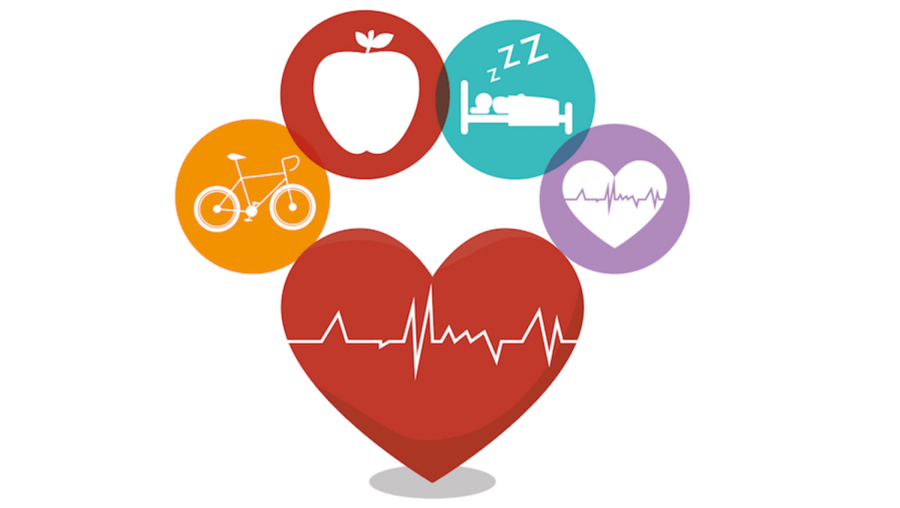The Profound Influence of Physical Activity on Women's Health: A Comprehensive Analysis
This article explores the multifaceted benefits of regular physical activity on women's health, integrating established theories and models from exercise physiology, behavioral science, and public health. We will utilize the Health Belief Model (HBM), which posits that health behaviors are influenced by perceived susceptibility, severity, benefits, barriers, cues to action, and self-efficacy. The Social Cognitive Theory (SCT) will also be employed, emphasizing the reciprocal determinism among personal, behavioral, and environmental factors in shaping behavior change. These models provide a robust framework for understanding and promoting exercise adoption and adherence in women.
A Lifespan Perspective on Exercise and Women's Health: Integrating the Life Course Perspective
Exercise plays a vital role across a woman's lifespan. The life course perspective emphasizes that health-promoting behaviors across all life stages significantly contribute to long-term well-being. During reproductive years, exercise regulates menstrual cycles, reduces premenstrual syndrome (PMS) symptoms, and potentially improves fertility. During pregnancy, moderate exercise, under medical supervision, mitigates gestational diabetes and preeclampsia risks. In post-reproductive years, exercise maintains functional independence, slowing age-related decline and reducing age-related illnesses, such as osteoporosis. A longitudinal perspective underscores the cumulative benefits of consistent exercise throughout a woman's life. This approach recognizes that health outcomes are shaped by a complex interplay of factors across the lifespan and emphasizes the importance of interventions tailored to specific life stages.
Mitigating Chronic Disease Risks: A Public Health Approach to Primary Prevention
Sedentary lifestyles are major risk factors for chronic diseases like type 2 diabetes, cardiovascular disease, and certain cancers. Regular exercise mitigates these risks. It regulates blood glucose levels, assists in weight management, and is linked to reduced cancer risk, possibly through immune system modulation and decreased inflammation. This aligns with primary prevention in public health, where proactive lifestyle changes significantly reduce the incidence and severity of various health issues. By emphasizing preventative strategies, we can improve population health and reduce the long-term burden of chronic diseases. Implementing population-wide strategies that promote physical activity can yield substantial benefits at the societal level.
Physiological and Psychological Well-being: Synergistic Effects and Underlying Mechanisms
Regular physical activity enhances cardiovascular health. Aerobic exercise strengthens the heart muscle, improving stroke volume and reducing resting heart rate, lowering the risk of coronary heart disease and stroke. This aligns with the principles of cardiovascular adaptation. Weight-bearing exercises stimulate bone mineral density, mitigating osteoporosis risk, consistent with Wolff's Law. Strength training increases muscle mass and strength, improving posture, balance, and functional capacity. These physiological benefits are interconnected. Beyond physical health, exercise boosts mental well-being through endorphin release, improving mood and alleviating anxiety and depression. Exercise also stimulates neurogenesis, enhancing cognitive function and mood regulation, and improves sleep quality, impacting the circadian rhythm.
Social and Behavioral Determinants of Exercise Adoption: Applying the Health Belief Model and Social Cognitive Theory
Successful exercise adoption and maintenance requires addressing social and behavioral factors. The HBM and SCT provide frameworks for understanding these factors. Interventions should enhance self-efficacy (an individual's belief in their capacity to execute behaviors necessary to produce specific performance attainments), foster supportive social environments, and address perceived barriers to exercise. Group exercise classes and community-based programs improve social support and motivation. Tailoring interventions to address specific community needs and cultural contexts is crucial. This exemplifies community-based participatory research principles, emphasizing collaborative approaches to improve population-level health improvements. Understanding individual beliefs and perceptions of exercise through the HBM and the influence of social and environmental factors through the SCT is crucial in designing effective interventions.
Conclusions and Recommendations: A Multi-Sectoral Approach for Sustainable Change
The evidence strongly supports the transformative power of regular physical activity on women's health. Public health initiatives must prioritize promoting physical activity, implementing tailored interventions that address individual and community-level barriers. Further research should focus on developing and evaluating culturally appropriate and sustainable strategies to improve physical activity participation across diverse female populations. Longitudinal studies are crucial to understand the long-term impacts of physical activity on specific health outcomes. Future research could explore technology-based interventions and the impact of different exercise modalities. Recommendations include integrating physical activity into healthcare settings, developing accessible and affordable community-based programs, and promoting evidence-based interventions leveraging the SCT and HBM to increase adherence. A multi-sectoral approach involving healthcare providers, community organizations, and policymakers is crucial for sustainable improvements in women's health. This collaboration is essential to address complex individual, social, and environmental factors influencing physical activity participation and achieve meaningful population-level health gains. A comprehensive, multi-level approach is needed to effectively promote physical activity among women and ensure long-term benefits for their health and well-being.
Reader Pool: Considering the article's discussion of the complex interplay between individual, social, and environmental factors influencing women's engagement in physical activity, what innovative policy solutions could incentivize widespread adoption of healthier lifestyles and create sustainable, community-based programs that effectively promote long-term physical activity participation?





No comments yet. Be the first to share your thoughts!